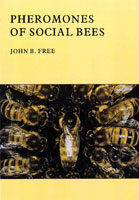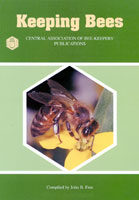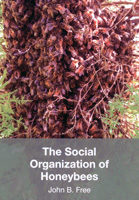Social insects employ many different pheromone systems which control almost all of their activities. Because of the economic importance and fascination of social bees their pheromones have been among the most studied and many exciting discoveries that have recently been made. This book is mostly concerned with pheromones of the honeybee. For convenience the chapter divisions are based on pheromone function and include subjects such as: communication of a queen’s presence; inhibitory effects of queens on queen rearing; control of worker ovary development; laying workers; stimulatory effect of queen pheromone; brood pheromone; comb pheromone; regulation of drone population; mating pheromones; nest and nest-mate recognition; trail and foraging pheromones; Nasonov pheromone; alarm and aggression pheromones.
It is evident that a number of pheromone sources are usually involved in controlling each type of behaviour and a single pheromone has many functions. Furthermore, it has become clear that most bee pheromones are multi-component and communication by pheromones is much more comp!ex than originally supposed. Many of the pheromone components release different behaviour patterns and so have different functions or combinations of functions. The present state of knowledge of each known pheromone is thoroughly evaluated, and throughout the book stimulating suggestions are made for further lines of enquiry.
Discussions on the pheromones of the stingless bees are included in the appropriate chapters. Pheromone studies on the social organisation of bumblebees and their mating behaviour have been allocated separate chapters.
The practical objectives of bee pheromone research involve the use of appropriate synthetic chemicals, analogous to the pheromones themselves, which will enable the beekeeper to control colony activities and especially to increase the colony’s efficiency in crop pollination and honey production. At the end of each appropriate chapter ways in which synthetic chemicals are and might be used to increase beekeeping efficiency are discussed, and progress to date and the economic potential are summarised in a concluding chapter.
The confines of a bee colony, with numerous contacts and exchanges between individuals of the same or different castes, and between individuals of different stages of maturity must embrace numerous pheromone systems so far undiscovered. It is hoped that this book will provide the foundation for such discoveries to be made.
The book is illustrated with diagrams and photographs, and includes all major references on bee pheromones.





